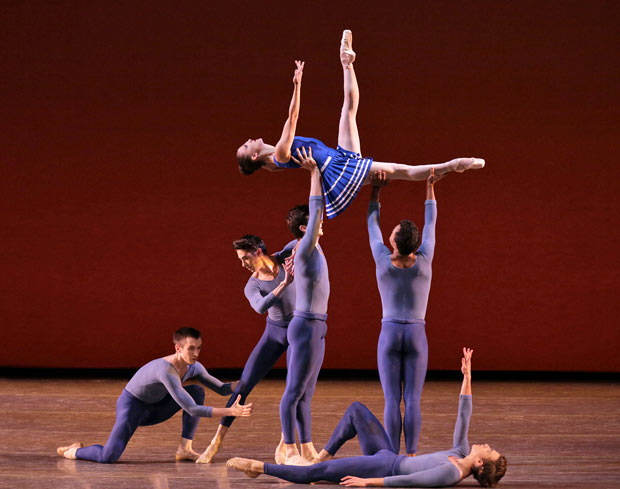
© Paul Kolnik. (Click image for larger version)
The Future is Now
New York City Ballet
21st Century Program: Two Hearts, Year of the Rabbit, Les Carillons
New York, David H. Koch Theater
5 October 2012
www.nycballet.com
New ballets come and go, but it is exciting indeed when a première by a young, relatively inexperienced choreographer reveals a fresh voice full of ideas and promise, musical intelligence, and the structural knowhow to make it all work. So let us raise a glass to young Justin Peck of New York City Ballet, whose Year of the Rabbit was performed last night (Oct. 5) with great success at the State Theatre, in a triple bill that also included recent works by Christopher Wheeldon (Les Carillons) and Benjamin Millepied (Two Hearts).

© Paul Kolnik. (Click image for larger version)
One of the less-touted talents indispensible for a ballet choreographer is good taste in music, specifically the ability to identify music that is not only interesting to listen to, but also sparks the imagination and sustains – or converses with – the structures of the dance. Peck’s selection, an orchestral version of an electronic album by the indie-folk composer, Sufjan Stevens, (original title: Enjoy Your Rabbit) is a very good sign. The music is complex enough to hold its own, with a playful, jagged, non-classical feel. It’s intelligent music, and also of its time. And it has considerable rhythmic pulse, with uneven, asymmetrical counts and a folksy force. (The orchestration, by Michael P. Atkinson, is filled with rasping, squiggly sounds for the strings. One complaint: I missed the rhythmic edge that might have come from the inclusion of percussion instruments. The orchestra will in time learn to play the piece with more incisiveness.)
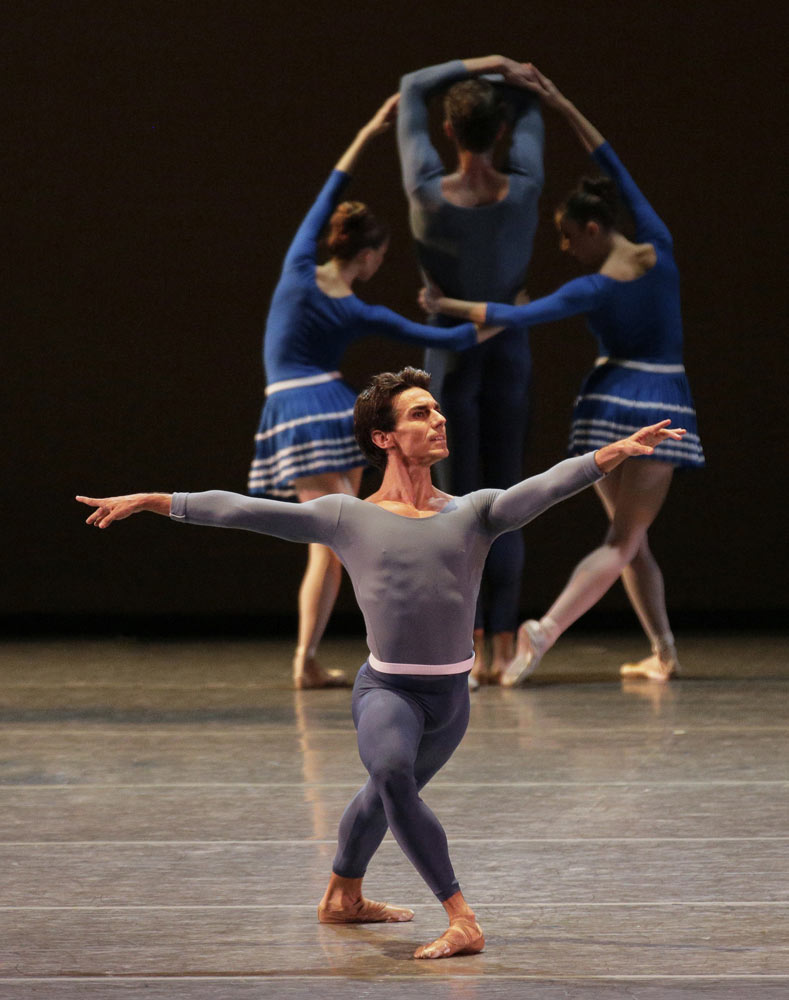
© Paul Kolnik. (Click image for larger version)
In response, Peck has created a strikingly asymmetrical, jagged dance, with patterns that form and dissolve across the stage. The dancers zig-zag in and out of the wings, or lie half-obscured, turning and stretching on the floor. They engulf the principals, echoing their movements and creating motifs of their own, or composing architectural structures with moving parts, such as a complex assemblage of arms and legs on one side of the stage, or a pyramid of heads reminiscent of Les Noces. If anything, the use of the corps is the most compelling aspect of the work, echoing something the choreographer recently said to me in an interview: “I want to create a sense of equality between the corps and the principal dancers. I’m interested in breaking up the fragmented way of presenting dance, to create a more seamless environment. And I want to play with transitions.” In response, the corps – Peck’s colleagues and friends – throw themselves into the movement with enormous commitment and sense of fun. He has engaged their imaginations and their particular skill set – the ability to work together, create patterns, animate the stage.

© Paul Kolnik. (Click image for larger version)
It’s certainly a young man’s ballet: he’s thrown in everything he’s seen and learned over the course of his time at NYCB. The influence of Balanchine and Jerome Robbins is strong, but even stronger, to my eye, is that of Alexei Ratmansky. One can see it in the jaunty, sporty style, the “bathing beauty” poses, the energetic sprints across the stage, and the small interactions between dancers, hinting at relationships. But beyond the external influences, there is also the intimation of a personal style, an interest in architectural shapes, robust partnering, and contrasting dynamics. A solo for Joaquín De Luz, especially, revealed Peck’s ability to create textures of fast and slow, stretched and staccato. He responds to his dancers’ abilities and temperaments: the solos and pas de deux have the feel of miniature portraits. Robert Fairchild is a tourbillon of intensity; Ashley Bouder a dynamo of jumps and acceleration. If anything, he may be playing too much to type, but then again, what can one expect? This is his first major work.
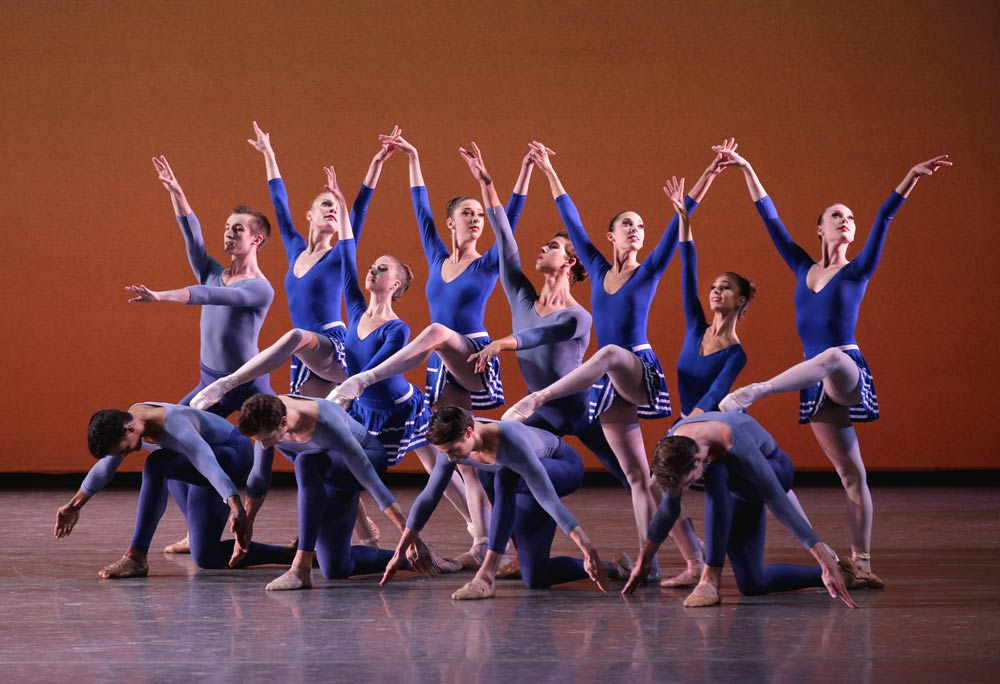
© Paul Kolnik. (Click image for larger version)
What struck me most about the ballet was its sense of freedom. This was the opening salvo of an imagination unleashed. Compared with the ballet that preceded it, for example (Benjamin Millepied’s Two Hearts), it felt pleasingly uncalculated, like a voyage of discovery. At a time when young choreographers seem overly concerned with appearing weighty and stylishly relevant, Peck appears to be mainly interested in exploring the form. Year of the Rabbit is about the excitement of working in a ballet company and teasing out the things that ballet is capable of, the stimulation of structure and detail, but also of stylized athleticism. The image that returns is a series of skating slides across the stage, audacious and deeply satisfying – a window back to reckless games of Slip N’Slide, but also a example of the finesse and control only technique can provide. Year of the Rabbit is a young man’s ballet, with the usual problems – some clutter, some rambling bits, especially in the pas de deux, and a tendency to pile on the ideas, but it shows enormous promise. Most of all, one wants to see it again, and whatever comes next. Let’s hope he doesn’t get distracted by free-lance projects; New York City Ballet could be his laboratory, a place to grow.
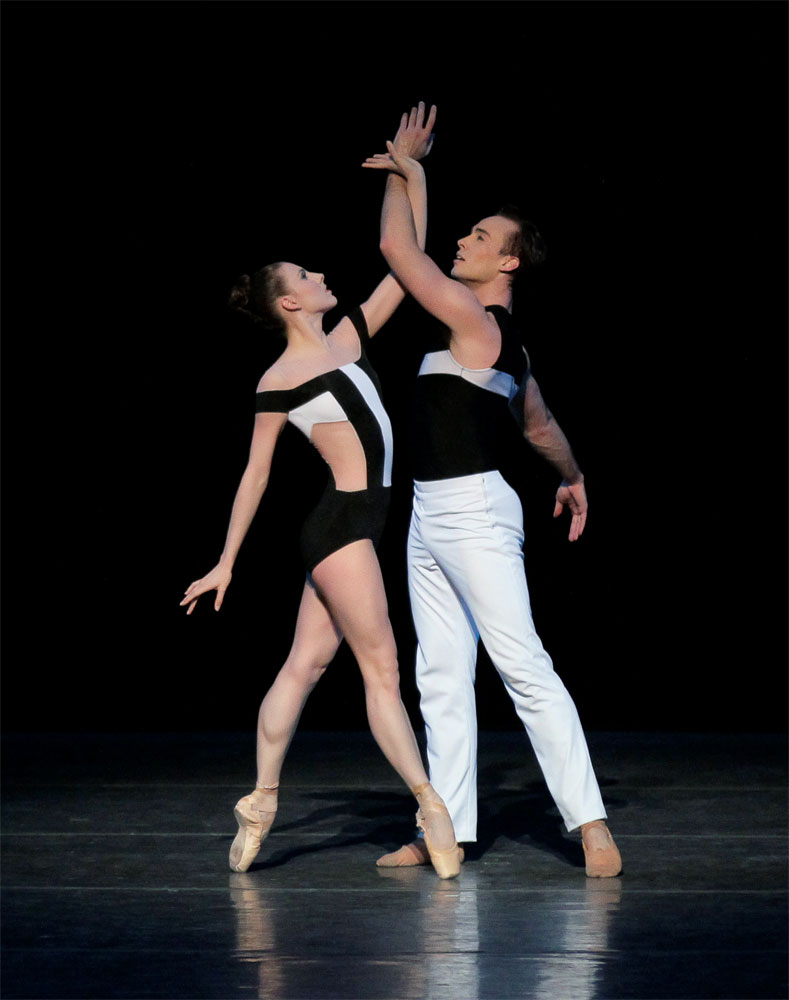
© Paul Kolnik. (Click image for larger version)
The evening ended with Christopher Wheeldon’s Les Carillons, a handsome piece created earlier this year. It is set to Bizet’s wonderful music from L’Arlésienne, which is in itself a kind of painting in sound. As in previous viewings, the highlight was a solo for Tiler Peck set to a bucolic flute melody. Peck dances it with a complete lack of affectation, exploring the delicate effects of the minute footwork Wheeldon has created for her, small swivels and a turning in and out of the legs on pointe, echoed in the upper body. She drifts into wafting turns, using her shoulders to create plush, easy shapes. Her instinctual musicality has become a highlight of each season. But one should also mention Lauren Lovette, a young corps dancer who danced in both Les Carillons and Year of the Rabbit; this dark beauty with sparkling eyes and endless limbs has a lyricism that never fails to draw one in. She is just beginning to blossom. There should be more nights like this at New York City Ballet.
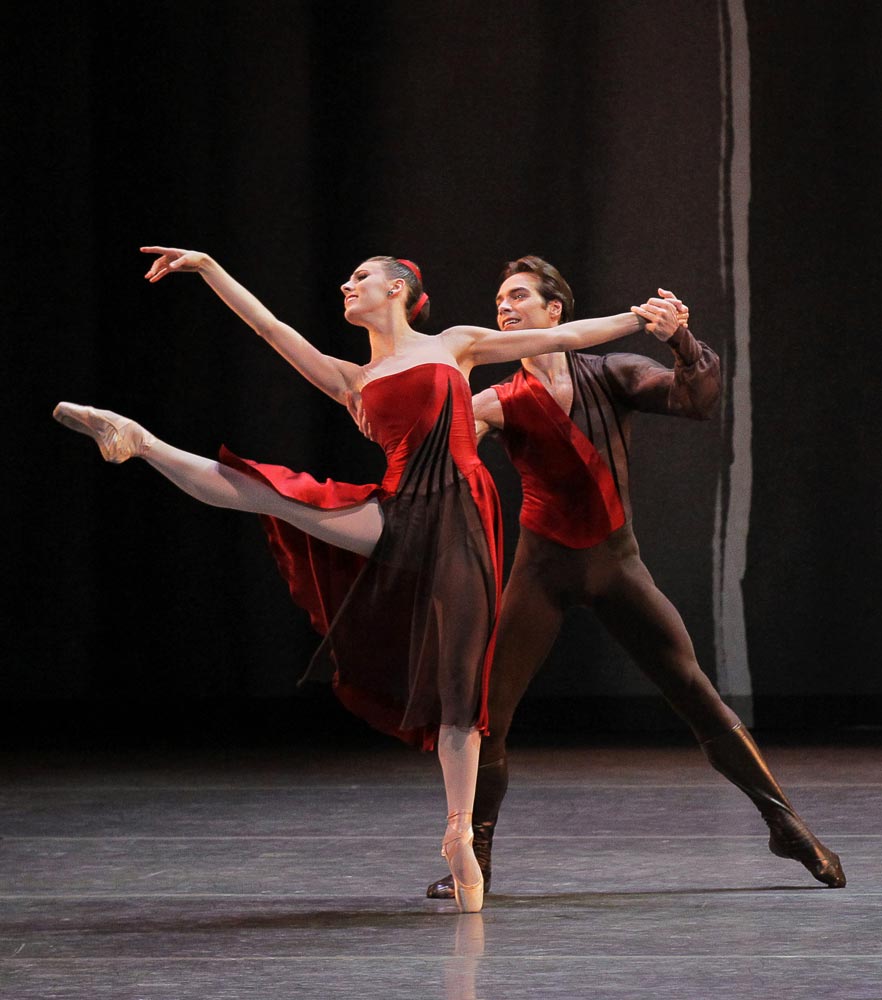
© Paul Kolnik. (Click image for larger version)
Year of the Rabbit will be performed again on Sunday, Oct 7 at 3 and Oct. 13 at 8.












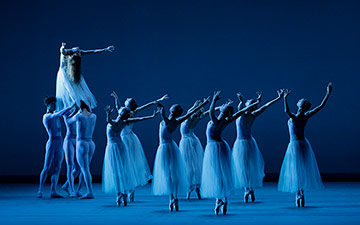
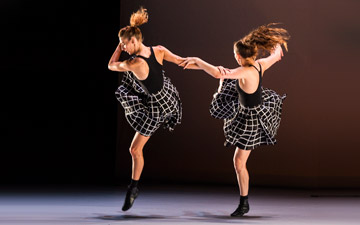

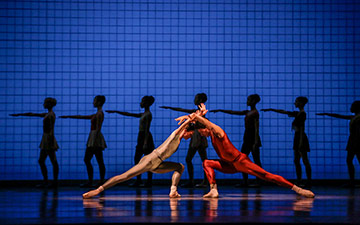

[…] success. It’s delightfully complex piece, with lots of moving parts. The corps is the star. Here‘s my review for […]
Wow–it sounds like I should’ve been there Friday night. Luckily I can catch another performance, though maybe not until early next year. Thanks for the thorough and highly appetizing evaluation.
A question, in case Marina sees this and can respond. The only costumed picture from the NYCB version (as opposed to the SAB workshop piece) suggests that the costuming was sleek, slim, no flowing materials such as skirts. Were all the costumes for Peck’s piece like that?
Dear John, I was waiting for the photos, which have now been added (see above). The costumes were sporty and blue, with little “tennis” skirts with stripes. They were flattering, I thought, and didn’t obscure the movement, always a good thing.
Cheers,
M